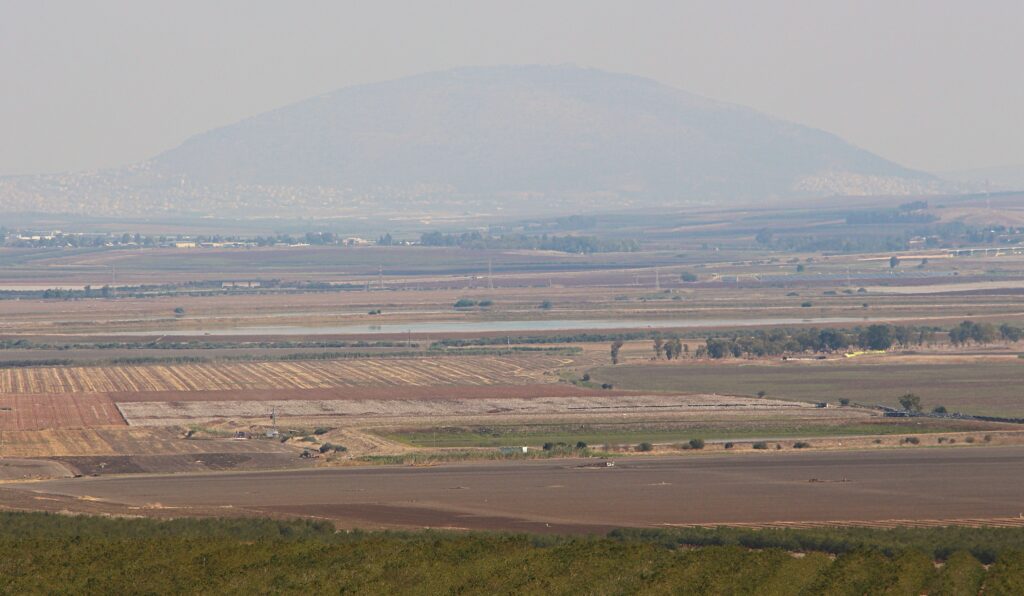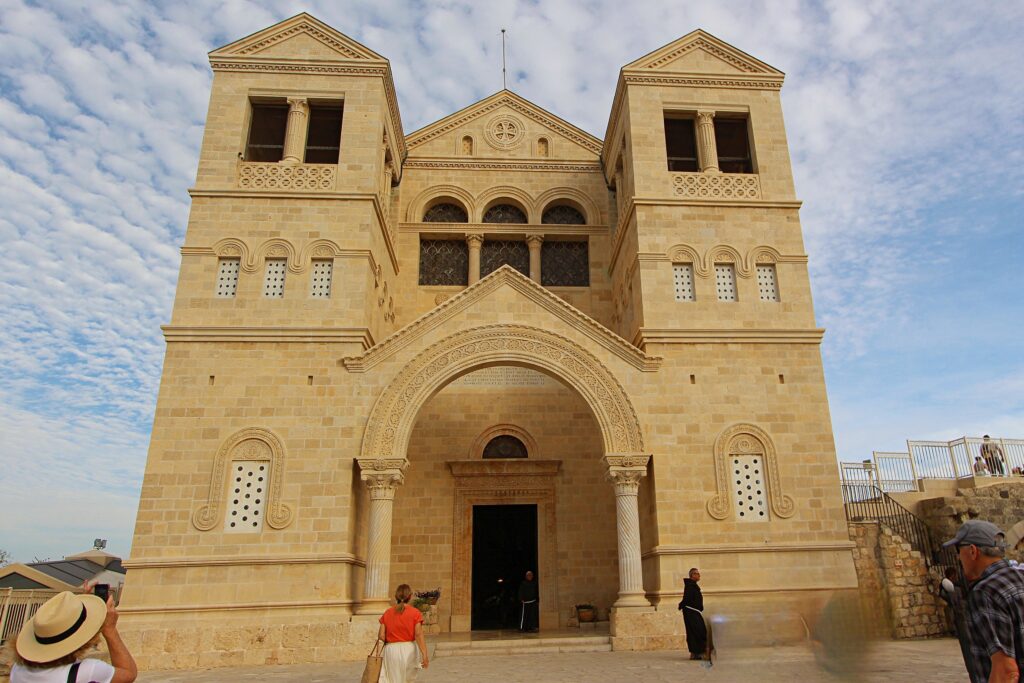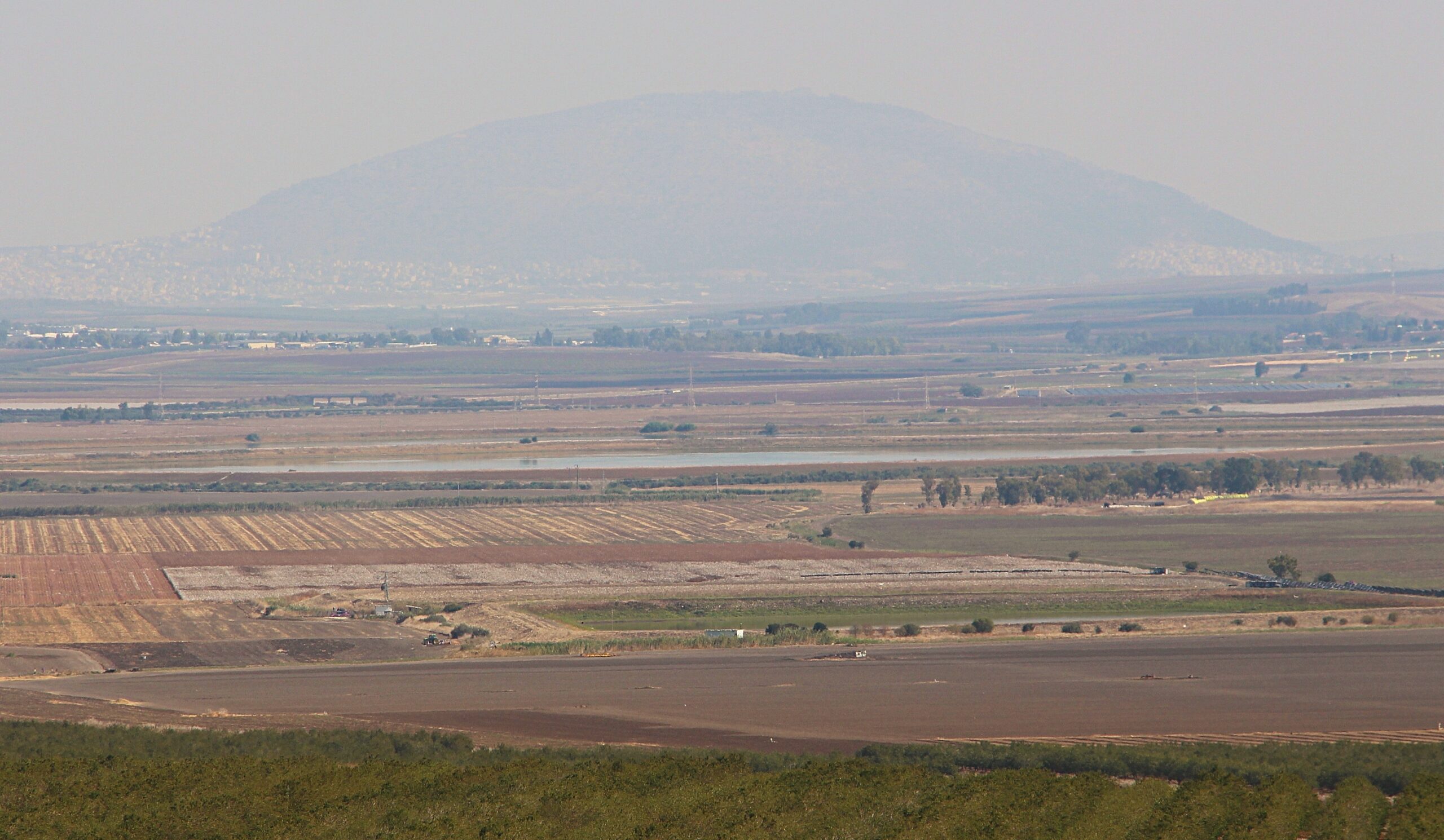
The king of Hazor, the largest Canaanite city in Galilee (and larger than any Israelite city of the period), oppressed the northern Israelite tribes roughly around 1200 BC. Hazor is located north of the Sea of Galilee and along the main highway between Egypt and Mesopotamia (present day Iraq). At this time all of Israel were under the reign of Judges, prophets chosen by the Lord. During the Hazor oppression the Judge was the Prophetess Deborah. She called a man of Israel named Barak to be the Israelite general and told him to gather an army to fight against Hazor’s general, named Sisera. “And she [Deborah] sent and called Barak … and said unto him, Hath not the LORD God of Israel commanded, saying, Go and draw toward mount Tabor, and take with thee ten thousand men.” Judges 4:6.
“And Barak said unto her, If thou wilt go with me, then I will go: but if thou wilt not go with me, then I will not go. And she said, I will surely go with thee.” Judges 4:9. “And Sisera gathered together all his chariots, even nine hundred chariots of iron, and all the people that were with him …. And Deborah said unto Barak, Up; for this is the day in which the LORD hath delivered Sisera into thine hand: is not the LORD gone out before thee? So Barak went down from mount Tabor, and ten thousand men after him. And the LORD discomfited Sisera, and all his chariots, and all his host, with the edge of the sword before Barak; so that Sisera lighted down off his chariot, and fled away on his feet.” Judges 4:13-15.
It is important to note that anciently chariots were the tanks of the battlefield. Infantrymen greatly feared chariots. The Israelites who didn’t have a standing army during the reign of the Judges didn’t possess chariots. Assembling high on a mount is smart as chariots are ineffective on a severe slant. Additionally, anciently until the 20th century most of the Jezreel valley (the flat area in the photo before Mount Tabor) was swampy and chariot wheels could get stuck in the mud. The only reason the Canaanite general Sisera would leave his fast chariot and run away on foot is if his chariot was stuck in the mud. By these geographic means the Canaanites were defeated by the Israelites.
But that is not the end of Sisera’s story. “Howbeit Sisera fled away on his feet to the tent of Jael the wife of Heber the Kenite: for there was peace between … the king of Hazor and the house of Heber the Kenite. And Jael went out to meet Sisera, and said unto him, Turn in, my lord, turn in to me; fear not. And when he had turned in unto her into the tent, she covered him with a mantle…. Then Jael Heber’s wife took a nail of the tent, and took an hammer in her hand, and went softly unto him, and smote the nail into his temples, and fastened it into the ground: for he was fast asleep and weary. So he died.” Jugdes 4:17-18, 21.
There might have not been hostilities between the Kenites and the king of Habor. Nevertheless, the Kenites were the descendants of Jethro the father-in-law of Moses. The Kenites had traveled with Moses and the Israelites in the desert for 40 years and continued with Joshua and the conquest of Canaan. They worshiped the God of Israel and were so closely allied with Israel to be considered Israelite kinsmen. Joshua had given them the city of Arad on the southern border of Judah for an everlasting inheritance. So whatever was the relationship between Heber and Hazor, it paled in relationship to Heber and Deborah.
Another side note, the Jezreel valley (also known as the valley of Armageddon) was swampy until Jews escaping the persecutions immigrating from Europe in the early 1900’s. They bought the swampy valley from Arab land owners who thought it was a worthless swamp. After hard work draining the swamp they discovered the soil was extremely fertile. The valley is now known as the breadbasket of Israel.
Mount Tabor as the Mount of Transfiguration?


Mount Tabor is the traditional location of the Lord’s Transfiguration recorded in Matthew 17:1-9, Mark 9:2-10, and Luke 9:12-16. The current Basilica of Transfiguration, built in the 1920’s, is over the ruins of a Crusader church and a probably a Byzantine monastery. However, scholars believe that at the time of Christ a Maccabean/Roman fortress stood at the summit of Mount Tabor. The summit affords wonderful and strategic views of the surrounding area.
The identification of Mount Tabor as the Mount of Transfiguration is dependent upon the scripture stating that the Lord took Peter, James, and John “into an high mountain apart.” Matthew 17:1, Mark 9:2. Certainly Mount Tabor is apart from other mounts. But is that what the “apart” refers to? Or is it apart from the other apostles or from people? And is Mount Tabor “high” enough? At 1,929 feet/588 meters, it is 650 feet/200 meters lower that Jerusalem. The questioning scholars point to Mount Hermon as a more likely candidate. Mount Hermon is 9,232 feet/2,814 meters above sea level and is by far the highest mountain in the region. Additionally, it better fits into the geography before and after the Transfiguration event. I will discuss the Lord’s Transfiguration when I talk about Mount Hermon. But if you visit Israel and your tour takes you to “the” Transfiguration site, it will be Mount Tabor as it’s location fits easily into itinerary logistics and there is a church there. On Mount Hermon there is only a ski resort.
< Previous post on Where Jesus Told Peter to Feed His Sheep, and The Feeding of the Five Thousand
Next post on Israelite Temple at Arad and Who Were the Kenites >
Return to the Homepage
